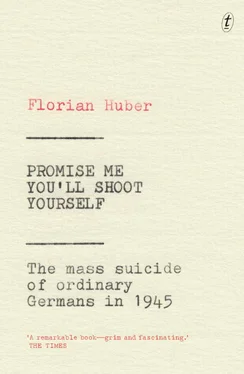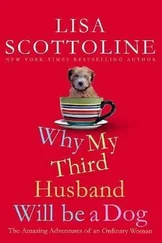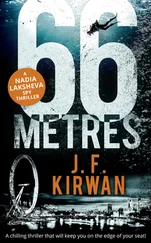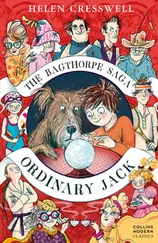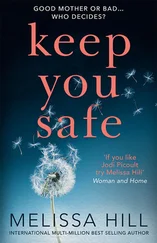Dr P. told us that about 600 people, many of them children, had walked into the Peene. He’d had to help fish them from the water and lay them out in long rows. All day long, bodies had kept washing ashore.
It took days to pile up all the bodies and take them to the cemetery to be buried. Once it was done, Dr P. had to help clean up the riverbanks and streets. Every evening he returned with the same bleak look on his face. Irene Bröker, meanwhile, spent the days searching the garden and fields for things dropped by looters: things they needed, like forks and spoons. One morning she went out into the garden and froze, seeing the horror with her own eyes for the first time. Beside the garden fence lay the body of a woman who had killed herself and her two small children. Irene Bröker saw only the children’s shoes and stockings. She didn’t dare go nearer, or touch them. ‘No one will ever know exactly what happened,’ she wrote later. ‘The three dead bodies lay there till evening. Then somebody must have given them a makeshift burial under cover of darkness.’
But the three nameless bodies didn’t rest for long. The next day, Russian soldiers came into the garden to root around in the ground with long, sharp-ended sticks, knowing that many Germans had buried their valuables in their gardens before taking flight. The earth over the dead woman and her two children had been churned up, exposing the bodies. Irene Bröker saw their pale faces, streaked with dirt, and painstakingly covered them with earth again. It was the same story the next day.
At last I came up with the rather horrible idea of leaving the children’s legs sticking up out of the earth. That way, there were always four little legs in shoes and brown stockings, peeping out as a ‘warning’ to foragers. We were very much upset by this macabre sight, but there were no more soldiers digging there after that.
Irene’s head was spinning. She had lost all sense of time. Her husband was missing, her parents lost along the way. A strange town was smouldering in the distance, and all around her was violence and looting. She heard Dr P.’s muted reports of what he had seen, saw those little legs sticking out of the earth, felt helpless and uncertain. She had no idea what was going on or how it would turn out. There was just her and little Holger—no hope for the future. Irene Bröker was physically and mentally robust, but she felt herself losing her grip. She, too, began to think it might be better to kill herself. The tablets were still there, in the watertight pouch around her neck. Her fingers rose to her throat when she thought of them.
Once she had made up her mind, Irene waited. When no one was about, she went into the kitchen and dissolved the tablets in two cups. Then she took a spoon and tried to feed a little of the liquid to her son. ‘He pulled a terrible face,’ she said, ‘but it was time for his meal so he gulped at it bravely.’ She felt a quiet desperation. A woman came into the kitchen unexpectedly, grabbed the cups and tipped the poison down the drain. But Irene Bröker stuck to her resolve to die and take Holger with her. ‘When the woman was gone, I decided to hang myself in the attic. But the thought of seeing my little boy dangling there, struggling, held me back.’
In the end, then, her suicide attempt failed, not because of her fear of death or her respect for life, but because of her vivid imagination. Without it, she might have shared the fate of many others in Demmin.
The next morning, little Holger slept late. At this point in the narrative, Irene’s tone changes: she sounds more grounded again. The days of numb desperation were over. The Soviets set up a provisional administration department, and the Germans in Demmin reconciled themselves to living alongside the enemy soldiers who stayed on. Before long, Irene Bröker was making plans to return to her hometown—although she did sometimes wonder whether she wouldn’t have been better off buried in the cemetery in Demmin. Writing about her experiences, she said: ‘All this sounds very far-fetched! But anyone who lived through that time in Demmin will understand.’
By Friday 4 May, most of the fires had been put out. Thin columns of smoke still rose from the charred heaps of rubble, but behind them the silhouette of the church tower could be seen again and was surprisingly unscathed. Many townspeople who had spent the last few days sheltering in barns, or in the fields or the woods outside Demmin, took this as a sign to venture back to their houses. The combat troops had moved on with their tanks over the temporary bridges, and the triumphant fury of those who remained behind had blown over.
Ursula Strohschein walked through the streets of the old town with her father, stumbling over smouldering piles of debris. Smoke-blackened holes where windows had been gaped out of the facades. At 16 Luisenstrasse, they stood before the mountain of rubble that had been Ursula’s father’s mineral-water factory. Here and there, machine parts and iron girders jutted into the air, looking strangely defiant. Nothing was left of what had once been Ursula’s childhood home—no house, no garage, no stables, no sheds. Her father managed to get hold of an undamaged flat in Anklamer Strasse, but only, as Ursula soon realised, because the people who had lived there had died:
The deserted dental practice had belonged to Dr Enders, who’d been found with his wife in Sandbergtannen Wood, half buried…shot dead. Only now did we discover the extent of the horror.
The dead bodies in the rivers and woods and houses hadn’t yet been retrieved and buried. Returning from the fields outside town, having narrowly escaped death at the hands of his own mother, ten-year-old Karl Schlösser saw corpses lying in the water, swollen to shapeless masses in the warm spring weather, some of them tied to one another with ropes. He saw hanged bodies swaying in the wind. Decades later, Karl Schlösser could still see those people hanging in the apple trees when he shut his eyes. ‘A heavy blanket of smog lay over the town for days, partly from the smoke and fire, and partly from the sickly sweet smell of all those dead bodies.’
In some of the burnt-out houses, people returning home found the charred remains of those who had hanged or shot themselves. Many only discovered now that their relatives, neighbours or friends had taken their lives. On Soviet orders, the bodies were hastily buried in gardens and yards. Orders were also given for corpses to be retrieved from the rivers and canals before they became a source of disease and a threat to the living. There were still horses pulling covered carts up the hill to the cemetery weeks later. Drowned bodies continued to wash up on the shallow, reedy banks, and with each day that passed they became harder to identify.
Medical student Lotte-Lore Martens spent days looking for her invalid father. He was no longer in the flat in Campstrasse where she’d left him with relatives; he’d gone off, saying that he was going to kill himself. The bank of the Tollense was only a few yards from Campstrasse. As Lotte-Lore and her uncle paced up and down beneath the blossoming willows of the winding flood plains, she shuddered at the spring countryside’s indifference to the disaster.
The sight of the riverbank moved me more each day. The meadows by the river, resplendent in their spring finery, were edged, like the border of a dress, with about 1.5–2 metres of baby’s clothes and other garments—expensive frocks and furs in particular—and identity papers and passports. Money, too—a lot of money—but nobody stooped to pick it up; it seemed to us worthless.
Lotte-Lore Martens never found her father, but she did find his military ID and his fur coat, on the bank opposite the waterworks. She also found coats belonging to her aunt and grandmother.
Читать дальше
